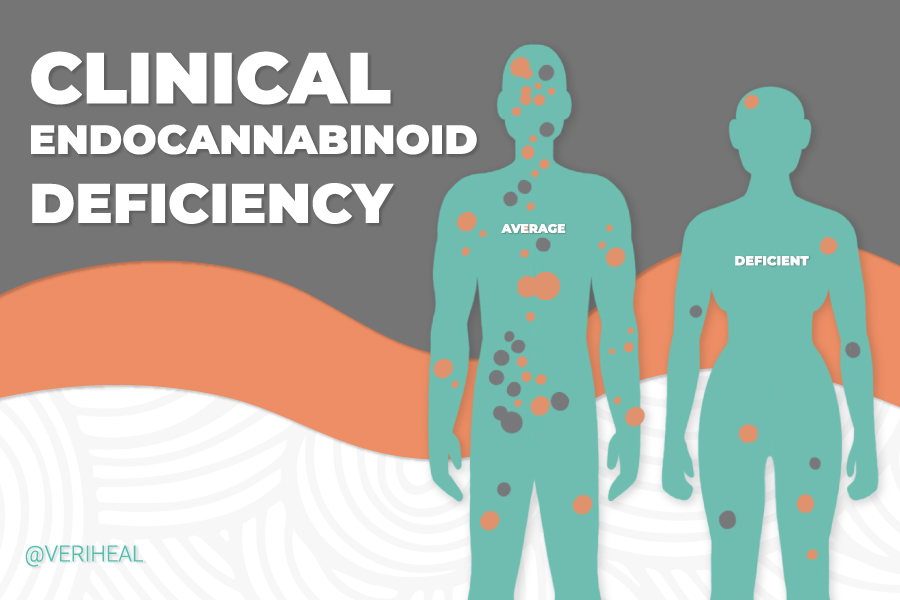The word ‘endocannabinoid’ seems to belong to cannabis at first glance. However, some may be surprised to find out that all humans have an endocannabinoid system and professionals are still trying to completely understand the endocannabinoid system (ECS).
Researchers have discovered the ECS by trying to understand how cannabinoids play a role in the body. We now know how the ECS plays a role in chronic pain, nausea, inflammation, and a variety of other processes in the body. While this knowledge initially focused on cannabis and how it works in the body, the implications of this new system are far greater and have the potential to change the way medications and cannabinoids can treat symptoms in our bodies. It also has the potential to target diseases and medical conditions that are currently untreatable.
One thing is for sure, the ECS plays a role in regulating a range of functions and processes. Theory suggests that in certain conditions and genetic influences, the endocannabinoid tone becomes deficient and thus health problems may arise.
What is the Endocannabinoid System (ECS)?
The endocannabinoid system can be found in the bodies of both humans and animals. This explains why a lot of research that focuses on medical marijuana typically begins in animal studies or extracted human cells. The ECS is ubiquitous and does not have an exact location that it can be found in the body as it consists of endocannabinoids, cannabinoid receptors, and enzymes that have the ability to both activate and deactivate processes in our body. Keep reading to find out more about these components.
Endocannabinoids
Endocannabinoids are essentially fat-based neurotransmitters in our bodies. These neurotransmitters are made and produced within our bodies. The ECS can influence endocannabinoids through processes that essentially increase (agonist) or decrease (antagonist) the levels of these self-made chemicals in our bodies. This is important because changing these levels can help elevate our mood, alter how we perceive pain, and modulate the immune system by slowing down inflammation that may be causing conditions such as arthritis or other autoimmune diseases.
The most well-known, fat-based, neurotransmitters that the ECS has influence over include anandamide (AEA) and 2-arachidonoylglycerol (2-AG). Depending on what cannabinoids are ingested into the body, such as Δ9-tetrahydrocannabinol (THC), cannabidiol (CBD), cannabigerol (CBG), etc., AEA and 2-AG can be increased or decreased in order to change how the body is functioning.
Cannabinoid Receptors
Cannabinoids receptors are a few of the different types of receptors that are activated when cannabis and its cannabinoids are ingested into the body. The major receptors influenced by this include cannabinoid receptors CB1 and CB2. CB1 receptors are thought to be mainly located in the brain and other portions of our central nervous system, which is partly why we feel an altered mental state after consuming THC. CB2 receptors are found in larger numbers within various tissues, organs, and joints in our bodies. It is primarily thought of as the cannabinoid receptor that can potentially decrease inflammation in the body.
ECS Enzymes
There are several enzymes that work within the endocannabinoid system of the body. They are important because they are often tasked with creating endocannabinoids including AEA and 2-AG. These enzymes have been broadly contributed as the ‘extended endocannabinoid system’ (4). In addition to producing endocannabinoids, they are also responsible for degrading endocannabinoids and serve in some cases as protein receptors that help activate the endocannabinoids in different areas of the body.
Although professionals are still trying to figure out all of the ECS, it is known to play a role in regulating functions and processes of sleep, mood, appetite, memory, reproduction, and fertility. The ECS is active in our bodies, even if cannabis isn’t being used. We know that the ECS is linked to our metabolism, mood, memory and learning, liver function, bone regrowth, skin, nerve function, cardiovascular system functions, and more.
This bodily system is complicated and we have yet to establish all the details of how the ECS works throughout the body, but we do have a lot of research about how it plays a role in many of the conditions that qualify for medical marijuana use. For more detailed information on how all these pieces work to make up the ECS, please check out our more detailed guide on the endocannabinoid system.
Why You Should Get Your Medical Marijuana Card
Veriheal has satisfied millions of patients nationwide by giving them access to these benefits
- Larger purchase limits
- Peace of mind
- Enhanced legal protection
- Access to higher potency strains
- Save up to 25% on cannabis purchases
- Skip the line at the dispensary
The functions provided by the ECS all contribute to homeostasis, which is the term used to refer to the stability of your body’s internal environment. When something external causes, for example, pain… the homeostasis of your body is thrown off, causing the ECS system to react in order to restore the body’s stability. This is a normal daily process in our body, but researchers have found that there are potentially chronic medical issues that are caused by these imbalances. Doctors and researchers refer to this as clinical endocannabinoid deficiency.
What is Clinical Endocannabinoid Deficiency (CECD)?
The notion of CECD is a scientifically supported theory that conditions can occur as a result of problems in the body’s ECS. Those problems can be a result of an insufficient amount of endocannabinoids being produced or by missing or defective receptors. Without the ECS, the body is not able to maintain the ECS balance, thus being susceptible to diseases and conditions which may occur.
The notion of clinical endocannabinoid deficiency (CECD) was first presented by Dr. EB Russo in 2001 in two publications but was only more thoroughly explored in 2004 (6). Dr. Russo’s theory explains that all people have an underlying endocannabinoid tone which can reflect [1] levels of AEA and 2-AG, [2] the acting endocannabinoids, [3] their synthesis, [4] catabolism, or degradation of cannabinoids, as well as the [5] density of the cannabinoid receptors in the brain. All of which are important for accessing whether one has CECD. Though the details of CECD are complicated, they can be thought of in simple terms. Simply put, clinical endocannabinoid deficiency can be defined as any condition or illness that stems from a deficiency of the body’s own functioning endocannabinoid system.
Logically, if the primary role of the ECS is to restore balance, then CECD would mean that the function and performance of the ECS will decrease followed by lowered pain thresholds and derangements. Some researchers believe that the CECD could be the underlying cause of many medical conditions.
Conditions Caused by CECD
Dr. Russo’s theory has become much more than an idea as many researchers are finding that ECS activation or deactivation can help a variety of medical conditions that researchers have not otherwise found adequate solutions for. A good example of this concerns medical cannabis for the treatment of migraines.
Dr. Russo, a well-known neurologist theorizes that the reason why THC helps migraines have to do with restoring the balance of the ECS (6). He believes that this is why earlier research suggests that when THC is introduced into the body, less serotonin (a neurotransmitter known for mood regulation) attached to platelets are released into the body and thus relieves migraine symptoms (5). Check out our article about serotonergic drugs for more information.
Additional conditions that have been linked to clinical endocannabinoid deficiency include but are not limited to (6):
Commonly, most of these conditions remain treatment-resistant. Some suggest that it may be due to the underlying nature being missed or overlooked. New evidence in the form of CSF endocannabinoid measurements and brain imaging in these conditions, as well as frequent co-diagnosing, support the underlying theory of CECD. CECD can be difficult to diagnose because current anatomical and physiological scanning techniques like fMRI and PET scans are not yet able to produce real-time and direct assessments of endocannabinoid levels in living patients (8). Genetic abnormalities and levels of endocannabinoids in the blood and CSF also need to be explored further to be understood and meaningfully applied.
Can Cannabis Provide Relief to CECD?
Though we have knowledge of certain conditions being associated with endocannabinoid deficiencies, current research does little in the way of pinpointing how these conditions can be fully treated. Cannabis can theoretically assist with reducing many of the symptoms associated with these medical conditions based on its ability to suppress the release of fatty acid amide hydrolase (FAAH), which is an enzyme that breaks down anandamide.
In other words, by suppressing FAAH, CBD can potentially enhance AEA tone and provide medical benefits with it. Acidic cannabinoid precursors like cannabigerolic acid (CGBA), tetrahydrocannabinolic acid (THCA), cannabidiolic acid (CBDA), cannabidivarinic acid (CBDVA), and tetrahydrocannabivarinic acid (THCVA) may work similarly to increase endocannabinoid levels, but more research is needed before we have clinical treatment guidelines for CECD and these difficult-to-treat medical conditions.
Note: Veriheal does not intend to give this as professional medical advice. Do not attempt to self-diagnose, or prescribe treatment based on the information provided on this page. Always consult a physician before making any decision on the treatment of a medical condition.
1. Armeli, F., Bonucci, A., Maggi, E., Pinto, A., & Businaro, R. (2021). Mediterranean diet and neurodegenerative diseases: The neglected role of nutrition in the modulation of the endocannabinoid system. Biomolecules, 11(6), 790. https://www.mdpi.com/2218-273X/11/6/790
2. Cogan, P. S. (2020). Practical considerations of hypotheses and evidence in cannabis pharmacotherapy: Refining expectations of clinical endocannabinoid deficiency. Journal of Dietary Supplements, 17(5), 608–624. https://www.tandfonline.com/doi/full/10.1080/19390211.2020.1769246
3. McPartland, J. M., Guy, G. W., & Di Marzo, V. (2014). Care and feeding of the endocannabinoid system: A systematic review of potential clinical interventions that upregulate the endocannabinoid system. PLoS ONE, 9(3). https://journals.plos.org/plosone/article?id=10.1371/journal.pone.0089566
4. Ramer, R., Schwarz, R., & Hinz, B. (2019). Modulation of the endocannabinoid system as a potential anticancer strategy. Frontiers in Pharmacology, 10. https://www.frontiersin.org/articles/10.3389/fphar.2019.00430/full
5. Randall M. D. (2007). Endocannabinoids and the haematological system. British journal of pharmacology, 152(5), 671–675.https://www.ncbi.nlm.nih.gov/pmc/articles/PMC2190025/
6. Russo E. B. (2004). Clinical endocannabinoid deficiency (CECD): can this concept explain therapeutic benefits of cannabis in migraine, fibromyalgia, irritable bowel syndrome and other treatment-resistant conditions?. Neuro endocrinology letters, 25(1-2), 31–39. https://www.researchgate.net/publication/274389723_Russo_Clinical_Endocannabinoid_Deficiency_NEL_2004
7. Russo E. B. (2016). Beyond Cannabis: Plants and the Endocannabinoid System. Trends in pharmacological sciences, 37(7), 594–605. https://pubmed.ncbi.nlm.nih.gov/27179600/
8. Russo E. B. (2016). Clinical Endocannabinoid Deficiency Reconsidered: Current Research Supports the Theory in Migraine, Fibromyalgia, Irritable Bowel, and Other Treatment-Resistant Syndromes. Cannabis and cannabinoid research, 1(1), 154–165. https://www.liebertpub.com/doi/10.1089/can.2016.0009
Author, Share & Comments








